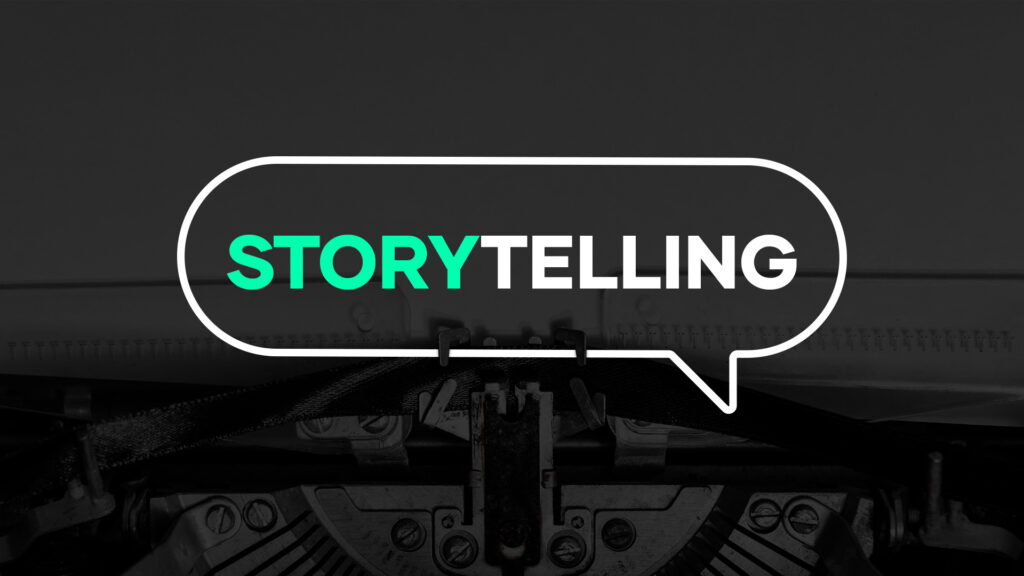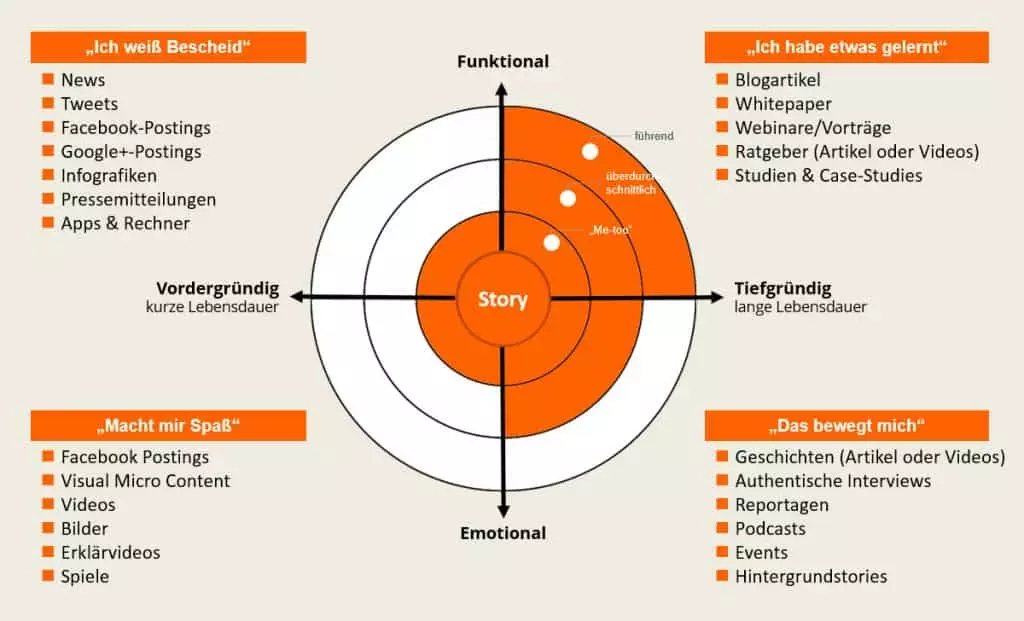Reading time: 6 min

When every little thing is blown up into a big story, does the potential of brand staging die?
How are you doing? What are your impressions? More and more posts on social media, whether business related or on a private level, evoke in me a reflection that is, to put it mildly, at least ambiguous:
- Impressive life wisdom or interchangeable calendar sayings?
- Profound experiences or mundane ones?
- Interesting statement or petty self-dramatization?
- Interesting personality or air pump?
Everything is staged, exaggerated, integrated into an important story – and as a result, I’m now experiencing a sharp increase in fatigue and frustration. The relevant content hardly counts anymore and the packaging is becoming more and more important. Especially on LinkedIn, this is a development I strongly regret. Storytelling is a powerful opportunity and important tool in brand orchestration. We have all learned that information in the form of a coherent, emotional story is better remembered than the pure information, the numbers/data/facts. In this respect, the development on social media is absolutely understandable. Everyone is concerned about presenting themselves in the best light – and sees themselves as a brand. Unique. Unmistakable. With strengths the world needs to know about…
But it is much too often just hot air. And obviously so!
What is the possible effect of this? Will there be attrition and numbing? Will storytelling still have relevance in the context of brand communication, even though all content is staged as a story? Will it become an ever more pronounced higher, further, faster? Or will a countermovement set in and relevant content as well as substance regain their esteem?
In many cases, appearances are now far more important than reality.
A development that cannot work in the long term and will not convince. My hope is that in the short term we will learn to focus on substance again. Is a less is more already on the horizon? Is that where the really impressive, the difference lies? For this, it would be even more important to know what one’s own substance is. What acceptance it finds with the target group and what relevance it has compared to the competition. Instead of building on these simple foundations, a superficial and often unfortunately interchangeable beauty contest prevails. Individuality is sacrificed to trendy staging, and one’s own brand character becomes interchangeable. This is because the perceived (competitive) pressure to keep producing new content must inevitably lead to less relevance in quantity.
This brings us to content marketing, which is closely linked to storytelling.
At this point, a brief clarification of the terms to avoid misunderstandings. In fact, in this case, Wikipedia provides a good summary of definitions from the literature:
Storytelling
Storytelling is a narrative method used to pass on explicit, but above all implicit knowledge in the form of leitmotifs, symbols, metaphors or other means of rhetoric. It is mainly used in digital media, but has a long tradition. The audience consumes the story not only by listening, reading or watching, but can be actively involved as prosumers in the implementation on news portals, blogs, streaming platforms and in virtual reality. The term storytelling is closely related to narrative.
Storytelling is used in education, knowledge management, corporate communications, as a problem-solving method, and as a marketing method, among others. In academia, it is used to communicate expert knowledge to a lay audience, but is occasionally rejected because of its alleged manipulative nature.
(Wikipedia)
Content marketing
Content marketing is a marketing technique that aims to address the target group with informative, advisory and entertaining content in order to convince them of one’s own company and its range of services or one’s own brand and to win or retain them as customers.
In contrast to advertising techniques such as ads, banners or commercials, the content of content marketing does not focus on the positive presentation of one’s own company and its products, but offers useful information, useful knowledge or entertainment. Content marketing is based on trade press, consulting and entertainment publications in its approach and subject matter. Content marketing achieves its goals by profiling the content producer as an expert, consultant, and entertainer who demonstrates competencies, know-how, and value propositions through content rather than merely asserting them.
Content marketing is part of strategic marketing. It focuses on creating and distributing valuable, relevant, and consistent content to attract, retain, and ultimately generate profitable customer action from a clearly defined audience.
(Wikipedia)
Both definitions below to the point:
“Storytelling is a narrative method used to share knowledge in the form of leitmotifs, symbols, metaphors, or other means of rhetoric – and content marketing focuses on creating and distributing valuable, relevant, and consistent content.”
This summary in mind illustrates the difference, between what is the goal and what is reality!
Complementing this is the good chart of Content Radar by Mirko Lange, where the possibilities and the playing field of content marketing are very well illustrated to achieve storytelling:
 Quelle: https://scompler.com/rb-das-fish-modell-und-der-content-radar-zwei-strategie-tools-fuers-content-marketing-3/
Quelle: https://scompler.com/rb-das-fish-modell-und-der-content-radar-zwei-strategie-tools-fuers-content-marketing-3/
Which story and content as part of it really interests? Well, of course, somehow everyone always responds to people, beautifully staged photos. But is it enough permanently to communicate generalities in connection with it, as compared at the beginning of this post? Do I thereby strengthen the person and/or institution?
From my point of view the answer to that question is a clear no! And I assume we are currently already at the tipping point, after which a corrective sets in and actually relevant content gains more importance again. Relevant (for the target group), authentic (because credible), differentiating (from comparable content)!
However, the knowledge of this must first be acquired and thus recognized. This is easier to recognize for individuals than for institutions. Within institutions, it is optimal to let the multitude of people work together in a participative process – in order to have clarity about the brand personality, which can then be played out in a target-oriented way as a corporate and employer brand! This results in the relevant content for the storytelling and thus the knowledge of which content pays off.
Let’s stop waiting and start!
Because the content in the digital media is not getting less, but is still increasing, as the following diagram shows:

Institutions can only survive in this flood if there is a clear strategy that leads to convincing storytelling and differentiating as well as stringent content that pays off on the brand.
Let’s start! Because then, in the end, inflationary storytelling on social media has not contributed to its death, but to the further improvement and sharpening of this indispensable instrument of brand staging!
